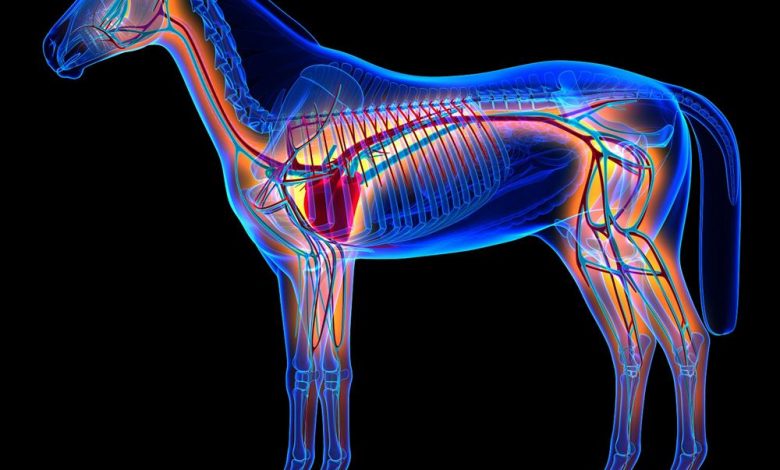
The heart is the most important muscle in the body as it must pump blood rich in oxygen and nutrients to the entire body.
The right side of the heart receives blood from the body that is depleted of oxygen and is full of carbon dioxide (waste product) and pumps it to the lungs. The lungs take this deoxygenated blood, and remove carbon dioxide, while adding oxygen from inspired air. The left side of the heart and circulation receives the oxygen-rich blood, and pumps it to every part of the body. There are 4 valves within the heart, atrioventricular and semilunar valves, which keep blood flowing in one direction to prevent mixing of oxygenated and deoxygenated blood. Deoxygenated blood flows from the body to the right atrium. It then goes through the tricuspid valve and into right ventricle where it is pumped through the pulmonic valve and into the lungs.
Once the blood circulates through the lungs it becomes oxygenated and returns to the heart. Here it goes into the left atrium, through the mitral valve, into the left ventricle, and then out through the aortic valve and to the rest of the body.
Horses are usually presented for relatively minor clinical signs in comparison with many small animals. It is relatively uncommon for horses to be presented with overt cardiac failure and the vets in chelmsford, therefore, must establish whether currently asymptomatic disease may deteriorate and become a problem in the future or whether clinical signs of heart disease, such as exercise intolerance, are a cause of heart disease or if the problem results from abnormalities in other body systems.
Unlike diseases of many other organ systems, cardiovascular diseases generally do not resolve but almost always become more limiting and may lead to death. In addition, cardiovascular diseases may be more difficult to diagnose because the heart cannot be seen and is protected so well by the rib cage. Therefore, evaluation of the heart depends on Heart and circulation sounds, the electrocardiogram, radiology and echocardiology.
Different Heart and circulation conditions
Anaemia
Horses become anaemic when they have a reduction in the number of red blood cells (RBC’s) or have inadequate haemoglobin within them, however, anaemia is probably one of the most commonly misdiagnosed disorders in horses and is not usually a disease in itself, but rather the sign of an underlying problem.
The purpose of the RBC’s is to transport oxygen to the tissues from the lungs and to return carbon dioxide for elimination from the body and if there isn’t enough oxygen the animal can’t perform. Tissue functions, like muscle contraction, can’t operate normally and the heart is placed under pressure to try and compensate.
Anaemia is most commonly seen as a result of blood loss, which can be internal or external, the destruction of red blood cells, immune mediated haemolytic aneamia (e.g. swamp fever), reduction in the production of red blood cells or secondary to any chronic disease. It may be caused by nutritional problems, for example iron deficiency or deficiency of vitamin B12, however, these are rare and most balanced diets contain more than enough iron to allow the horse to maintain normal numbers of red blood cells and the use of supplements containing high quantities of iron can actually be detrimental.
Read Also: 10 LARGEST DOG BREEDS & SLOWEST ANIMALS IN THE WORLD
Arrythmia’s
The heart rate of a horse is usually 25-42 beats per minute and is determined by the electrical conduction running through the Heart and circulation to provide controlled, rhythmic contraction. The electrical impulse starts at the sinoatrial node in the muscle wall of the right atrium and passes across the atria. The atrio-ventricular (AV) node is then activated. From here the impulses pass through a collection of fibres known as the Bundle of His and then spreads through the ventricles causing contraction. This conduction of electrical impulses is seen using an electrocardiogram (ECG). An arrhythmia is simply an irregular beat, some of these are of little significance where as others can cause a reduction of the cardiac output and hence signs of heart disease.
Diseases of The Blood Vessels
Jugular thrombosis is when a clot forms in the jugular vein running up the neck. This clot is usually caused by tauma to the vein and is, therefore, a complication of any intravenous injection especially catheterization.
Heart Failure
The most common heart condition in horses is dysfunction of the heart valves and the animal will usually show no symptoms, other than a murmur, and monitoring is all that is required. The reason for there being no signs of heart failure is because of the body’s ability to compensate for the changes, however, as the condition deteriorates the body is unable to compensate any more and signs of heart failure may be seen. Any horse showing signs of heart disease should not be ridden to ensure that the rider’s safety is not at risk.
Murmurs
Murmurs are sounds caused by turbulent blood flow through the heart and can be classified according to how loud the sound is, graded 1 to 6, the position at which the murmur can be heard most clearly and the place the murmur occupies in the heart cycle, i.e. between which beats the murmur occurs.
Where the murmur occurs between normal heart sounds is the most valuable tool as this can provide information as to what motion the heart is making when the turbulence is caused. For example if the turbulent flow produces a sound after the first heart sound then the murmur is most likely occur during systole, i.e. ventricles are contracting and the murmur could be associated with leaking mitral or tricuspid valves.